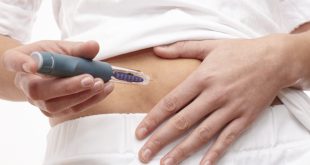A person with diabetes can run just as well as someone without diabetes. So, do not let diabetes limit your running goals.
However, if you take medication for your diabetes – and especially if you have type 1 diabetes – you’ll need to have a plan in place to manage your blood sugar for running. Ask your diabetes healthcare team to help you develop that plan. Here are some things to think about:
Nutrition. People are always concerned about what they should eat before, during and after a run. While that is certainly essential, the food you consume on a day-to-day basis is more important. Lean protein helps build muscles and also helps repair exercise-induced muscle damage. Fruits and vegetables contain antioxidants that help to protect against free radical damage that can result from exercise. Carbohydrates are important for immediate energy and to maximize the stored form of energy called glycogen. Speak to your dietitian about the nutritional plan that’s right for you.
Hydration. Your fluid intake is probably adequate if you drink enough fluid so that you rarely feel thirsty and your urine is colorless or light yellow. You should drink regularly throughout the day. Always start exercising when you’re well-hydrated. If your blood sugar is too high to begin with, you're at a greater risk of dehydration. People with diabetes may be more susceptible to adverse effects from heat, so be especially diligent with your fluid intake in the summer. Whenever possible, exercise in a cool environment, such as an air-conditioned training centre. When it’s hot outside, try to exercise in the early or later hours of the day.
Wear your MedicAlert® bracelet or necklace. Anyone who runs should wear some sort of identification, especially if they run alone. An emergency may have nothing to do with diabetes: wild animals on a running trail, changing weather conditions and reckless drivers are among the many hazards of which runners should be aware.
Monitor your blood sugar. If you take insulin or other medications that increase insulin levels, monitor your blood sugar before, during and many hours after your activity to see how it affects your blood sugar levels.
High blood sugar levels. If you start exercise with high blood sugars, it is possible that exercise can make them rise even higher. Generally, if you have type 2 diabetes, you do not need to postpone exercise because of high blood sugar levels, as long as you feel well. If you have type 1 diabetes, speak to your diabetes team about ketone testing.
Keep the lows at bay. Don’t let the fear of low blood sugar levels stop you from running. Know whether your medication puts you at risk for lows and discuss prevention strategies with your diabetes team. Here are a few tips for those who are at risk for low blood sugar.
- If your pre-exercise blood sugar levels are lower than 5.5 mmol/L, eat approximately 15 to 30 grams of carbohydrate before running.
- Carry some form of fast-acting carbohydrate with you in case you need to treat low blood sugar, such as, glucose tablets (the preferred method for treating hypoglycemia) or Life Savers®.
- Monitoring blood sugar before, during and after physical activity is necessary to keep your blood sugar level within an appropriate range.
- Do a few, very brief (10 seconds at most), full-out sprints either at the middle or end of your run, or intermittently during your run, once your muscles are warmed up. I know this sounds absurd, but sprinting during or at the end of a run is a general training strategy for running. The higher intensity of sprinting can actually increase your blood sugar levels, so if it will also help prevent hypoglycemia, why not give it a try?
- Do resistance exercises immediately before you run. This type of exercise leads to the release of hormones that increase blood sugars, possibly decreasing the risk of low blood sugar levels during your run.
With the proper preparation, running can offer you the opportunity to enjoy a whole new world of exercise!
 Diabetes Care Community Learn, connect and care
Diabetes Care Community Learn, connect and care




